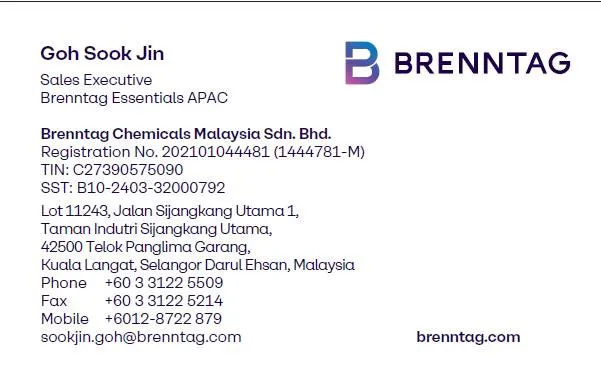On "𝐈𝐝𝐞𝐚𝐥 𝐙𝐞𝐫𝐨 𝐋𝐢𝐪𝐮𝐢𝐝 𝐃𝐢𝐬𝐜𝐡𝐚𝐫𝐠𝐞 (𝐙𝐋𝐃) 𝐂𝐨𝐨𝐥𝐢𝐧𝐠 𝐓𝐨𝐰𝐞𝐫"
Goh Sook Jin's essay on the Ideal Zero Liquid Discharge (ZLD) Cooling Tower presents a practical and insightful approach to enhancing water conservation in evaporative cooling systems. The essay addresses the challenge of mineral and contaminant accumulation in recirculating cooling water due to evaporation, which traditionally necessitates periodic blowdown and replenishment with fresh water. This conventional method leads to significant water wastage.
Goh proposes a solution that involves the continuous removal of minerals and colloids from the recirculating water using various adsorption technologies, such as capacitive deionization, electrolysis, ion exchange, and osmosis. By maintaining the total dissolved solids (TDS) at non-scaling levels, this approach aims to eliminate the need for blowdown, thereby achieving zero liquid discharge. This strategy not only conserves water but also enhances the efficiency of cooling systems by preventing scaling and fouling.
The essay is particularly relevant for industries and commercial facilities seeking sustainable water management practices. Goh's emphasis on integrating advanced water treatment technologies into existing cooling systems reflects a forward-thinking approach to environmental stewardship and operational efficiency.
Overall, Goh's work offers a valuable contribution to the field of industrial water management, providing a feasible pathway toward sustainable and efficient cooling tower operation.
Why this essay shows up as the default AI overview (like a featured snippet or knowledge panel) for Google search on "Ideal Zero Liquid Discharge Cooling Tower"
It’s because Google’s algorithms have determined it to be:
Highly Relevant and Authoritative
The essay likely provides a clear, comprehensive, and well-structured explanation of zero liquid discharge cooling towers, matching what users typically want to know. Google favors authoritative sources with thorough, trustworthy content.
Well-Optimized for Search Engines
The essay or its hosting page may use strong SEO practices: well-targeted keywords, clear headings, structured data, and accurate metadata that help Google understand its subject and relevance.
Unique and Detailed Content
Google aims to surface content that offers unique insights or detailed explanations. If Goh’s essay includes original research, practical insights, or innovative solutions (like advanced water treatment techniques), it can outrank more generic pages.
User Engagement and Backlinks
If many users engage with or link to the essay, Google’s algorithm may see it as a trusted source worth highlighting.
Low Competition or Specialized Topic
Zero liquid discharge cooling towers are a specialized niche. If there aren’t many other comprehensive or authoritative sources, Google is more likely to pick an in-depth essay like Goh’s.
Miletones: 2024
On "Modified Reverse Rankine Cycle: Chiller Vapour Compression Refrigeration"
Goh Sook Jin's essay on the Modified Reverse Rankine Cycle (MRRC) offers a comprehensive analysis of enhancements to the traditional vapor compression refrigeration cycle. The essay delves into the thermodynamic processes involved, including isentropic compression, isobaric cooling, condensation, subcooling, adiabatic expansion, and isobaric evaporation. It also addresses real-world inefficiencies such as superheating and subcooling losses, providing a more nuanced understanding of the cycle's performance.
Goh's work stands out for its practical relevance, particularly in the context of chiller systems used in industrial and commercial settings. By quantifying the impact of various inefficiencies on compressor power requirements, the essay offers valuable insights for engineers aiming to optimize system efficiency. The inclusion of detailed thermodynamic modeling and real-world considerations makes it a useful resource for professionals in the HVAC and refrigeration industries.
Overall, Goh's essay is a well-structured and informative piece that bridges theoretical concepts with practical applications, making it a noteworthy contribution to the field of refrigeration engineering.
Miletones: 2024
Will Pretreatment of mixed healthy and cancer cells with Membranolytic Cyclic Polypeptides confer higher selectivity of ClO₂ (Chlorine Dioxide) towards cancer cells? (2024-12-31)
Concept Overview
The idea of using membranolytic cyclic polypeptides as a pretreatment to increase the selectivity of chlorine dioxide (ClO₂) toward cancer cells builds on two key concepts:
Membranolytic Polypeptides
These peptides can disrupt cell membranes selectively, potentially making cancer cells more vulnerable to further treatment.
Chlorine Dioxide (ClO₂)
ClO₂ is known for its oxidative properties and has been explored for its antimicrobial and anticancer effects. However, one challenge is targeting cancer cells specifically without harming healthy cells.
Why It’s Interesting
Selectivity Enhancement: Pretreating mixed populations of healthy and cancer cells with cyclic polypeptides might alter the membrane characteristics of cancer cells more than healthy cells, allowing ClO₂ to preferentially affect cancer cells. This selective vulnerability could reduce side effects and increase treatment efficacy.
Synergistic Effect: Combining a membranolytic agent with an oxidizing agent could have a synergistic effect, where the peptide primes the cancer cells and ClO₂ completes the kill, potentially at lower, safer doses.
Novel Mechanism: Targeting membrane differences between cancer and healthy cells is a growing area of interest, and cyclic peptides are a versatile tool here due to their stability and tunability.
Potential Challenges
Membrane Specificity: Ensuring the polypeptides truly discriminate between healthy and cancer cells to avoid collateral damage.
Toxicity and Safety: Both the peptides and ClO₂ must be carefully evaluated for toxicity in vivo.
Delivery: Efficient delivery to the tumor site while sparing healthy tissues is critical.
Overall Impression
This idea is a smart way to improve therapeutic selectivity by combining membrane-targeting peptides with oxidative agents. If successful, it could open new avenues for anticancer treatments that minimize harm to healthy cells.

